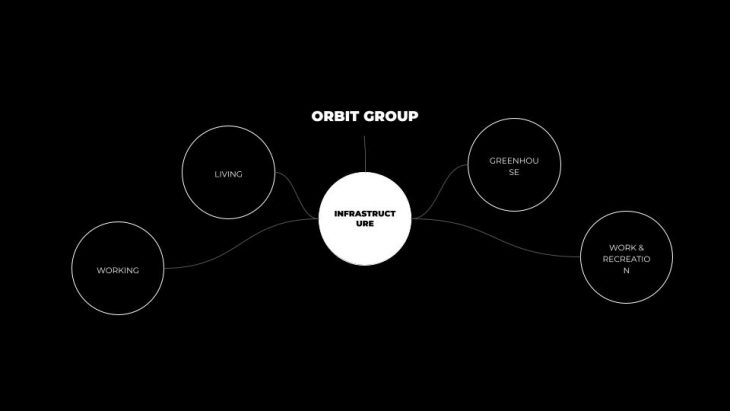ABOUT
The following project was developed at the 2022 Digital Tools for Integrative Modeling seminar. The main aim of the seminar is to explore AEC specific workflow for creating BIM documentation. This seminar uses the project developed by students in their studio which is a habitable space station in the Lower Earth Orbit (LEO). The team of students working on the orbit space comprises of 5 teams namely infrastructure, living, work, recreation and greenhouse. Infrastructure groups is centered around creating infrastructure modules that cater to all the other groups.
SCOPE
For this particular seminar students explored BIM tools like Revit and used their studio projects designed in Rhino and Grasshopper to push them to Revit using Rhino.Inside Revit technology, allowing students to explore the complex workflow from creating parametric grasshopper scripts inside Revit.
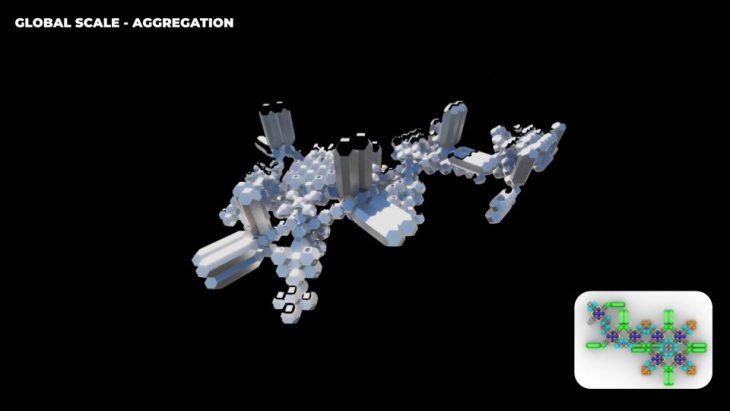
PROJECT
Truncated Octahedron are used a the base module by the infrastructure and the whole of orbit group and it is centered around the idea that infrastructure houses services and storage that are critical for the astronauts living in the space stations. The interior of this modules comprise of CTB’s (Cargo Transfer Bags) which house the the interior wall surface of every module and act as a storage bags for the astronauts. The outer shell of each module comprise of structural framing, the exterior cladding, sub-structure, door hatches and the windows.
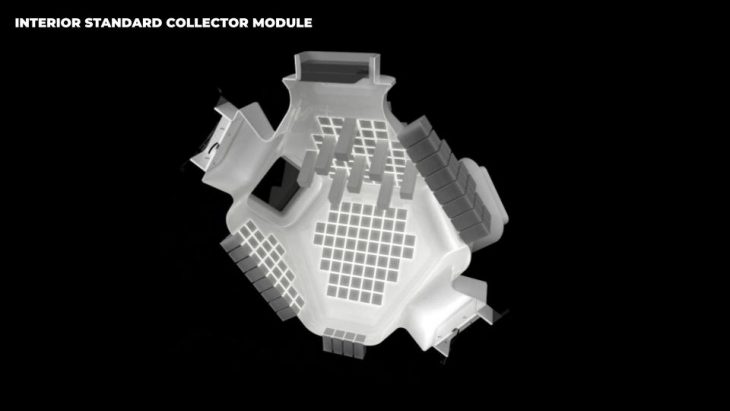
Isometric section render showing the CTB’s as the on the interior wall surface and windows.
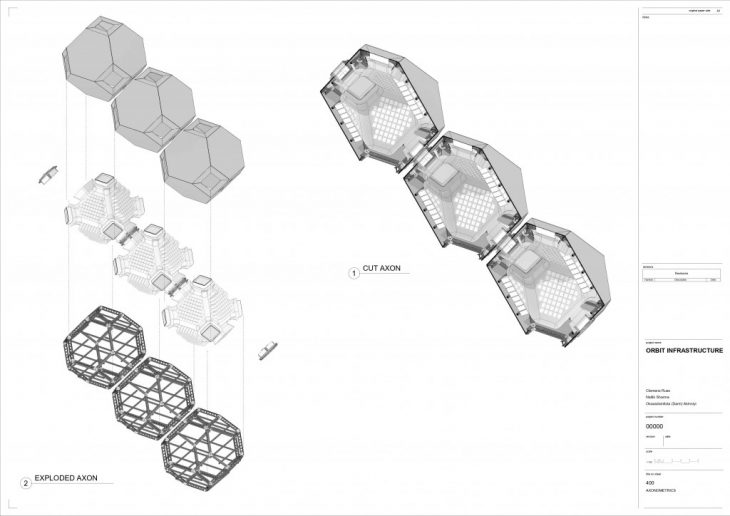
Exploded Axonometric showing the structural framing, interior surface with the CTB’s, outer cladding surface with windows and a cut Axonometric developed in Revit.
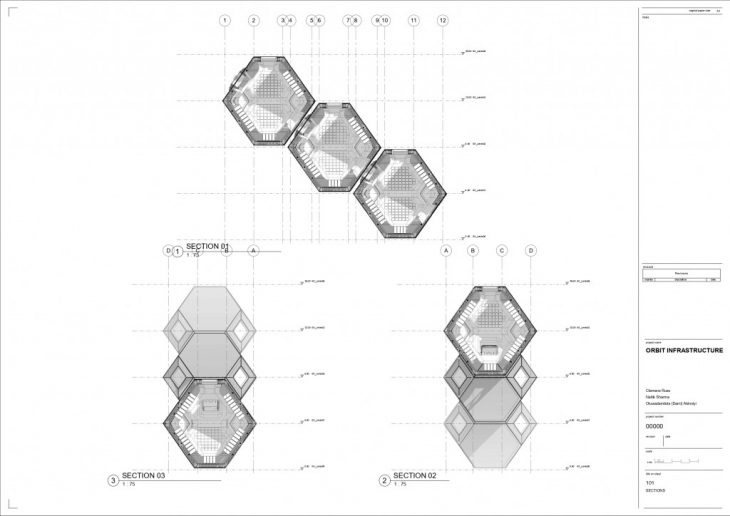
Sectional Elevations
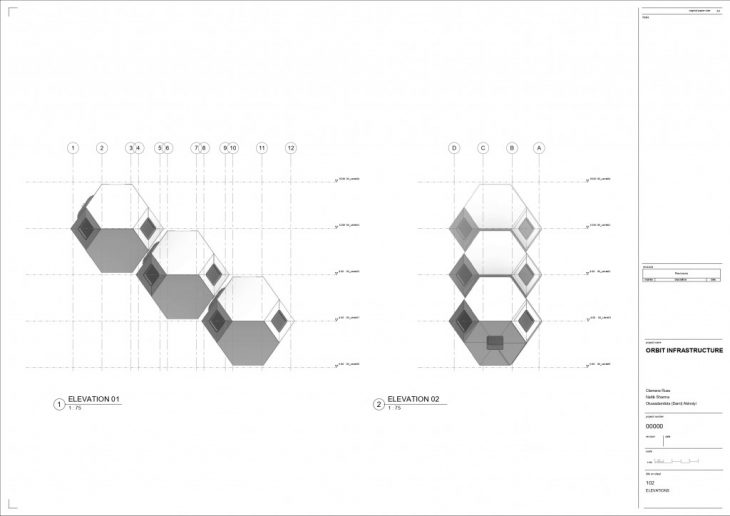
Elevations
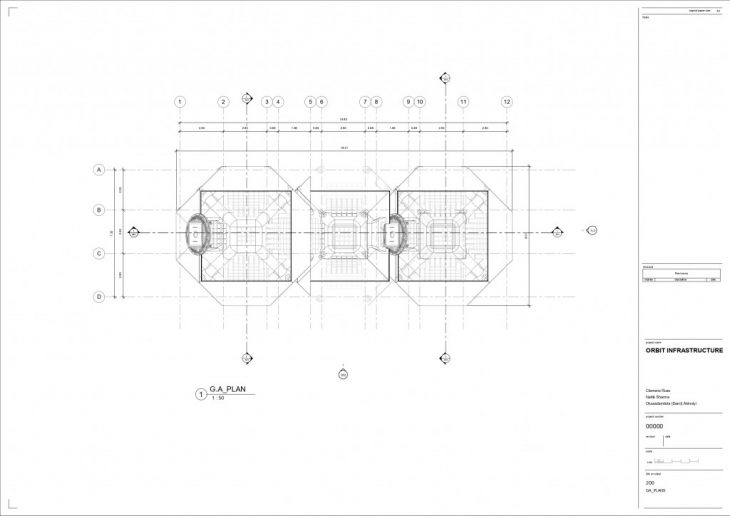
Floor Plan
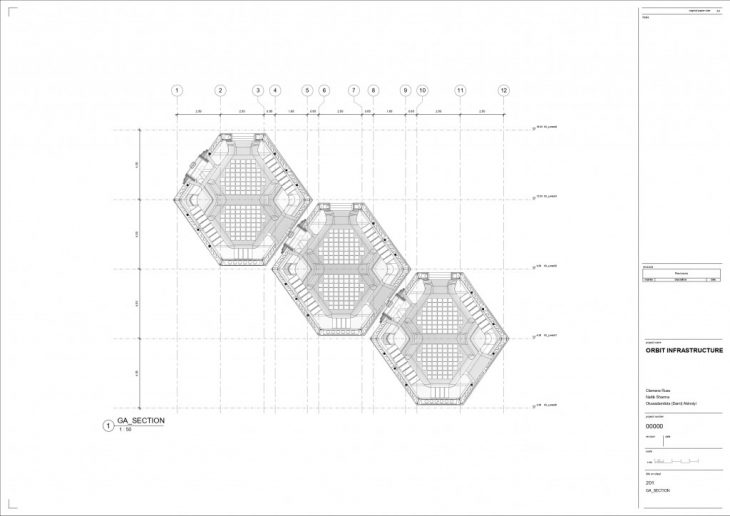
Section
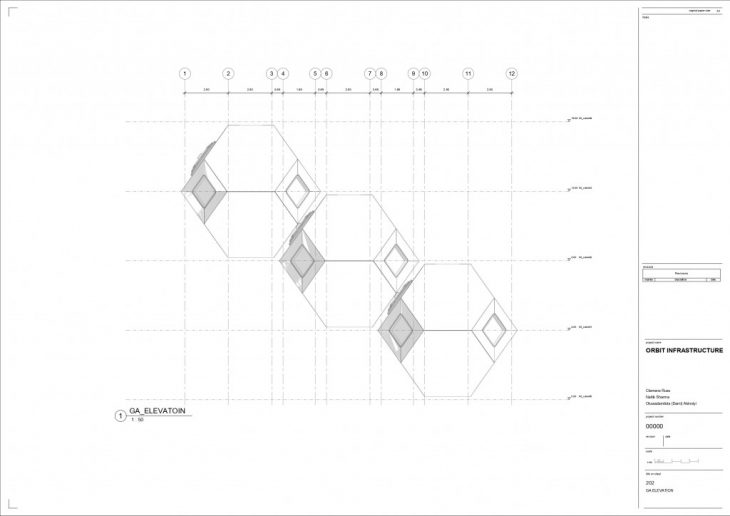
Elevation
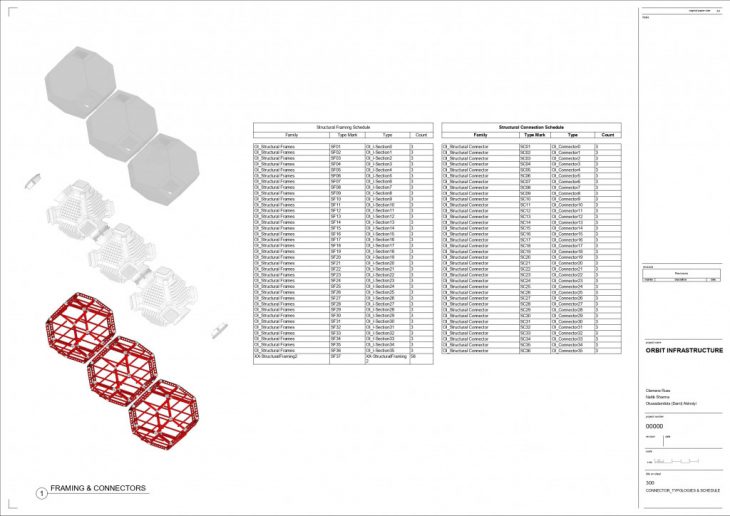
Schedules
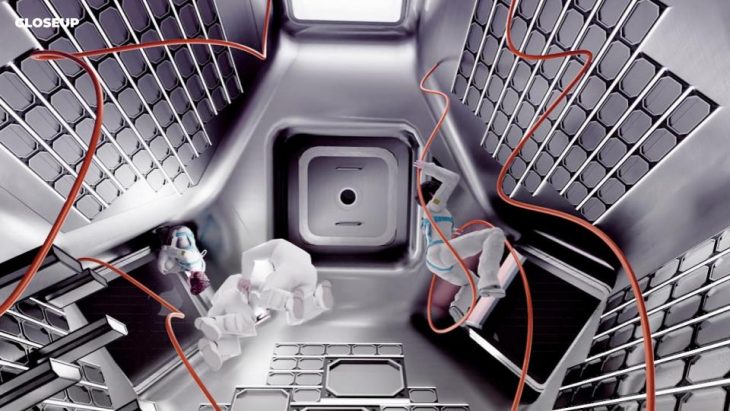
Interior Render
Orbit Infrastructure – Integrative Modeling is a project of IAAC, Institute for Advanced Architecture of Catalonia developed at MaCAD (Masters in Advanced Computation for Architecture & Design) in 2021/22 by students: Clemens Russ, Naitik Sharma, Oluwadamilola Akinniyi and faculty: Óscar Herrero and Andrés Antolín
